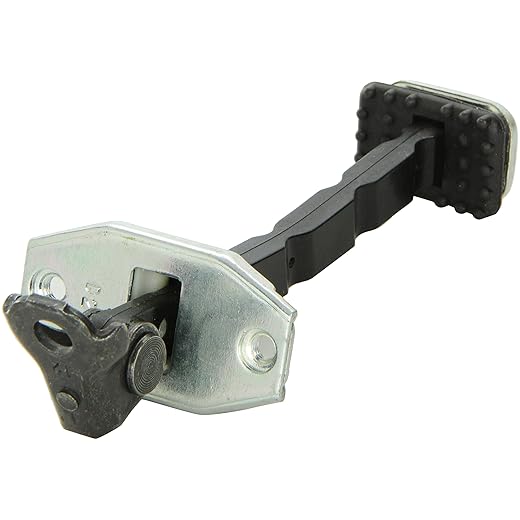







Understanding the Assembly Checker: A Complete Guide
In the world of manufacturing and assembly, precision is everything. Imagine a symphony orchestra; if even one instrument is out of tune, the entire performance can falter. Similarly, in assembly processes, a single misaligned component can lead to malfunctions, inefficiencies, or even catastrophic failures. This is where the assembly checker comes into play—a vital tool designed to ensure every piece fits together seamlessly. But what exactly is an assembly checker, and how does it work?
What is an Assembly Checker?
An assembly checker is a device or software application used in various industries to verify that components have been assembled correctly. Think of it as a vigilant quality control inspector, meticulously examining each part to ensure it meets specific standards. These checkers can range from simple visual inspection tools to advanced digital systems that use sensors and cameras to analyze assemblies in real-time.
Types of Assembly Checkers
There are several types of assembly checkers, each suited for different applications. Here’s a closer look:
1. Manual Assembly Checkers
These are typically checklist-based inspection tools where an operator manually verifies each component. While this method may seem outdated, it is still prevalent in small-scale operations or industries where precision is less critical. It’s akin to following a recipe; if you miss an ingredient, the dish might not turn out as expected.
2. Automated Assembly Checkers
For larger operations, automated assembly checkers are a game-changer. These systems employ sensors, cameras, and software algorithms to automatically verify the assembly. They can quickly detect errors that a human might overlook, ensuring that every assembly meets quality standards. Imagine a high-tech robot that not only assembles parts but also double-checks its work—this is the future of manufacturing.
3. Software-Based Assembly Checkers
In the digital age, software-based assembly checkers are gaining traction. These applications analyze data from various sensors and provide real-time feedback on assembly processes. This is particularly useful in industries like automotive or aerospace, where precision is not just important but critical. Think of it as having a GPS for your assembly line—constantly guiding you to avoid pitfalls.
Why Use an Assembly Checker?
You might wonder, “Why should I invest in an assembly checker?” The answer is straightforward: quality assurance. Here are some compelling reasons to consider:
1. Reduces Errors
Assembly errors can lead to costly reworks and delays. An assembly checker minimizes these risks by detecting issues before they escalate. Just like wearing a seatbelt protects you in a car, an assembly checker safeguards your production line.
2. Enhances Efficiency
By streamlining the inspection process, assembly checkers can significantly enhance overall efficiency. With automated systems, you can focus on other critical aspects of production while the checker does its job. It’s like having an extra set of hands—only more reliable!
3. Improves Customer Satisfaction
Delivering high-quality products fosters customer loyalty. With an assembly checker in place, you can ensure that every product meets customer expectations, leading to repeat business and positive reviews.
How to Implement an Assembly Checker
Implementing an assembly checker involves several steps, much like setting up a new software system. Here’s a brief guide:
1. Assess Your Needs
Evaluate the specific requirements of your assembly process. Consider factors such as the complexity of the assembly, the volume of production, and the criticality of precision.
2. Choose the Right Type
Based on your assessment, select the type of assembly checker that best fits your needs. Whether you opt for manual, automated, or software-based systems, ensure they align with your operational goals.
3. Train Your Team
Once you’ve chosen a system, proper training is essential. Your team should understand how to use the assembly checker effectively to maximize its benefits. Think of it as teaching a new sport; practice makes perfect!
4. Monitor and Adjust
After implementation, continuously monitor the performance of your assembly checker. Be open to making adjustments based on feedback and observed outcomes. Just as a gardener prunes plants for better growth, refining your process will yield better results.
Conclusion
In the fast-paced world of manufacturing, an assembly checker is not just a luxury; it’s a necessity. By reducing errors, enhancing efficiency, and boosting customer satisfaction, these tools can significantly impact your bottom line. Whether you’re running a small workshop or a large factory, investing in an assembly checker can be a pivotal step towards achieving excellence in your assembly processes.
FAQs
1. What industries benefit the most from assembly checkers?
Industries such as automotive, aerospace, electronics, and consumer goods significantly benefit from assembly checkers, as precision is critical in these sectors.
2. Can assembly checkers integrate with existing systems?
Yes, many modern assembly checkers are designed to integrate seamlessly with existing production systems, enhancing overall workflow without major disruptions.
3. How often should I calibrate my assembly checker?
Calibration frequency depends on the specific device and its usage. However, it’s generally recommended to calibrate regularly—at least once a year or whenever you notice discrepancies in performance.
